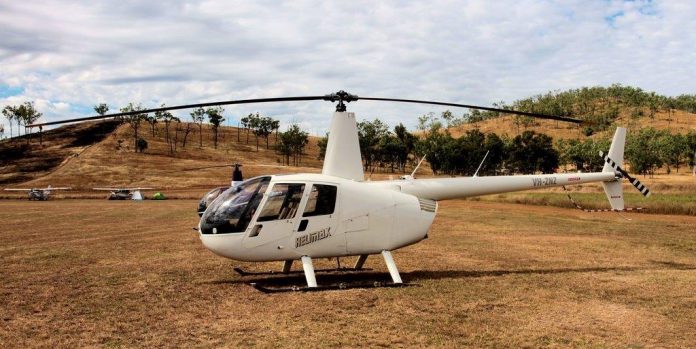The Australian Transport Safety Bureau (ATSB) is reminding pilots of the importance of carrying an impact-activated emergency locater transmitter (ELT) following the crash of a Robinson R44 in Queensland in 2016. The potential lifesaving importance of impact-activated transmitters is one of few clear lessons from a mysterious crash.
On 18 November the helicopter was on a charter flight with one pilot and one passenger on board when it crashed into dense rainforest 41 km north-west of Mossman after one of the main rotor blades stuck and separated a section of the tail cone. After the strike, the helicopter descended almost vertically, hitting the ground nose low and to the left. The passenger was killed but the seriously injured pilot was rescued.
The ELT activated on impact. When the Australian Maritime Safety Authority (AMSA) detected a signal, they initiated a search and rescue and as a result, the helicopter wreckage was located 1 hour 48 minutes after the initial detection of the signal.
The pilot, who was placed in an induced coma, could not remember anything about the crash.
The ATSB found there was low engine power and rotor speed at the time of the tail strike, which was likely the result of a main rotor blade stall soon after the helicopter took off. However, the ATSB was unable to determine what caused the blade stall. It examined overpitching of the main rotor blades, loss of engine power or loss of rotor drive, but could not find conclusive evidence for any of these scenarios.
It could not be determined if wind and turbulence contributed to the accident but the ATSB stresses the importance for pilots to consider the effect of the terrain on weather forecasts, which could result in a helicopter not achieving its predicted performance.
The ATSB contrasted the rapid rescue of the pilot with the crash of a helicopter in 2017, where the survivors were unable to reach a manually triggered emergency position indicating radio beacon (EPIRB). About the 2016 R44 crash the ATSB said, ‘The activation of the transmitter on impact was the trigger to start the search and rescue operation, and recover the pilot, who may otherwise have not survived.’






Good to say that the impact activated ELT worked and helped save the injured pilot. BUT it has to be noted that there have been a number of accidents where the ELT did not work.
In summary the jury is still out as to whether an inbuilt impact activated ELT or a portable ELT is best. In this accident the pilot was probably not in a fit state to activate a portable ELT.
It is also of note that a number of aircraft have a portable ELT on board but stuffed behind a seat or in the glove box. It meets the regs of having one if going beyond 50 nm but is probably useless in the event of an accident whereby the pilot and or passengers do not know where the portable ELT is or how to use it.
A portable that is taken out of the aircraft in the event of a fire or ditching is better that one mounted in the aircraft. That is where a portable that is carried on the person of the pilot, on his belt maybe, is better still.
The article could also have covered the aspect that the FAA is trying to work with manufacturers of ELTS to try and make them work better on impact but not from a heavy landing.
All food for thought.
There’s never the perfect set up for this. There’s a hundred diff ways to crash, an ELT either mounted or portable can’t be guaranteed to work in all scenarios. I have a PLB within arms reach of the seated portion in my own plane, that’s about the best I can do.
Yes, a good example of an impact activated ELT working. Not stated here is that a number of impacts have not activated the ELT. In the US of A the FAA is working with ELT makers to try and make them work better and correctly on impact.
Maybe that is good enough reason to have an impact activated unit IN the aircraft PLUS another on ones self so that in the case of the aircraft ditching or having a crash fire the pilot with his own ELT – attached to himself – has the ability to activate his own ELT.